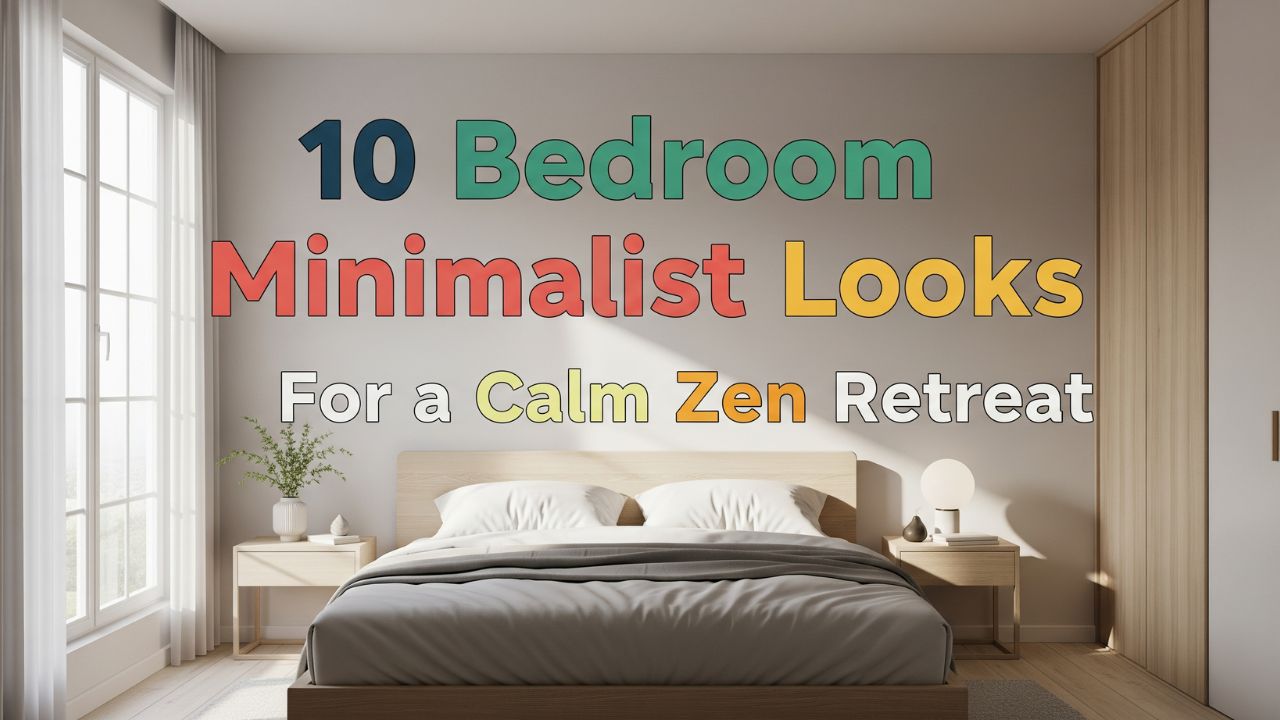Some links in this post are affiliate links. If you make a purchase through these links, I may receive a small commission. This helps support the site at no extra cost to you.
Have you ever wondered how to achieve the perfect balance between minimalist elegance and warm, natural elements in your living room?
If so, you might want to explore Japandi style — a seamless blend of Japanese and Scandinavian design principles that’s been gaining popularity in interior design. It’s not just a style; it’s a lifestyle choice that brings comfort, simplicity, and tranquility into your home.
Japandi style blends the clean lines and functionality of Scandinavian design with the natural, rustic elements of Japanese interiors.
The result? A calm, harmonious space that reflects a true sense of balance. But how exactly can you infuse this style into your living room? Here are 8 inspiring Japandi style living room ideas that’ll make you fall in love with the aesthetic.

Table of Contents

8 Living Room Japandi Style Ideas
1. Natural Wood Elements for Warmth and Texture
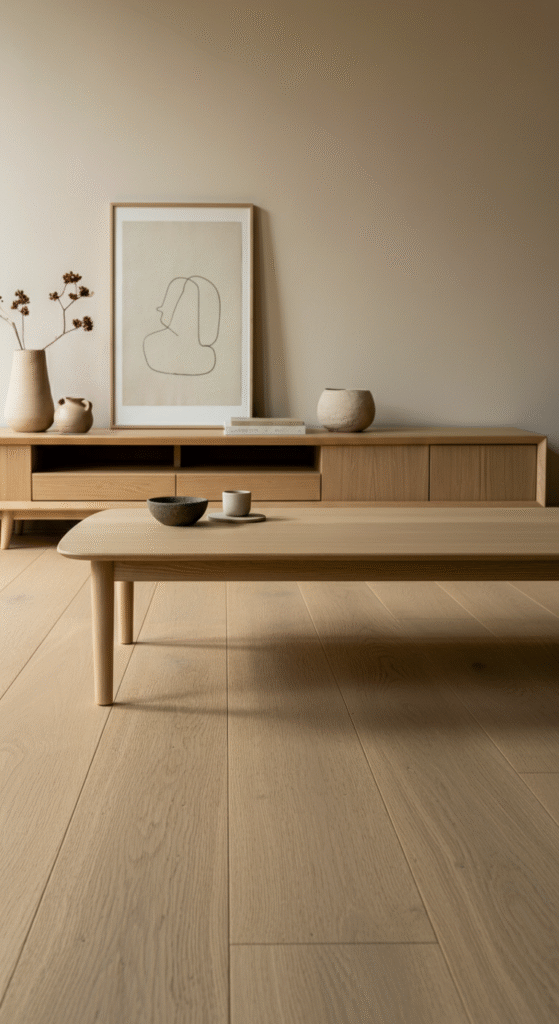
The foundation of Japandi style revolves around natural materials, especially wood. When you think of Japandi, think warm wooden accents — like oak, walnut, and bamboo — that effortlessly add a sense of grounding to your space.
Do you know that incorporating wood into your living room not only enhances its aesthetic but also improves your mood? Studies show that natural wood can have a calming effect, making it a perfect addition to a Japandi-inspired living room.
For your living room, start with wooden furniture like a low-profile coffee table or a minimalist TV console. You could also consider wood-panelled walls or wooden floors to give the room a sophisticated yet organic vibe.
2. Neutral Color Palette with Earthy Tones
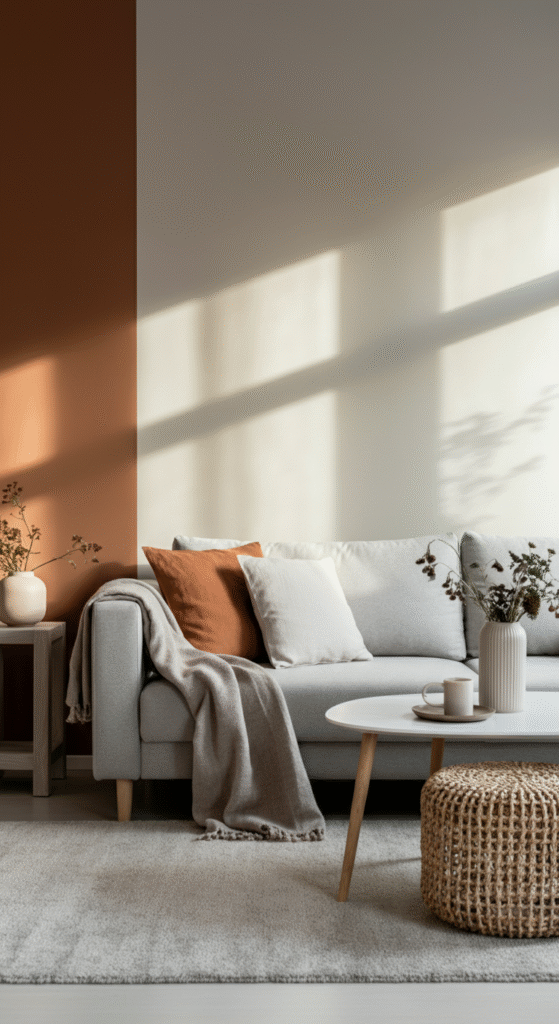
When decorating your living room in Japandi style, it’s essential to choose a neutral and muted color palette. Think soft whites, light beiges, muted greys, and earthy tones like terracotta or sage green. These colors create a serene atmosphere and emphasize the calming nature of the Japandi style.
Here’s a fun fact: While Scandinavian interiors often rely heavily on whites and greys, Japanese design embraces subtle tones of brown and green to complement the wood and nature elements. This harmonious blend of colors makes Japandi so unique.
To achieve the look, use neutral walls and a subdued color scheme for your furnishings. Throw in soft textiles like linen cushions or wool throws to add depth and coziness.
3. Low Furniture for an Open and Airy Feel
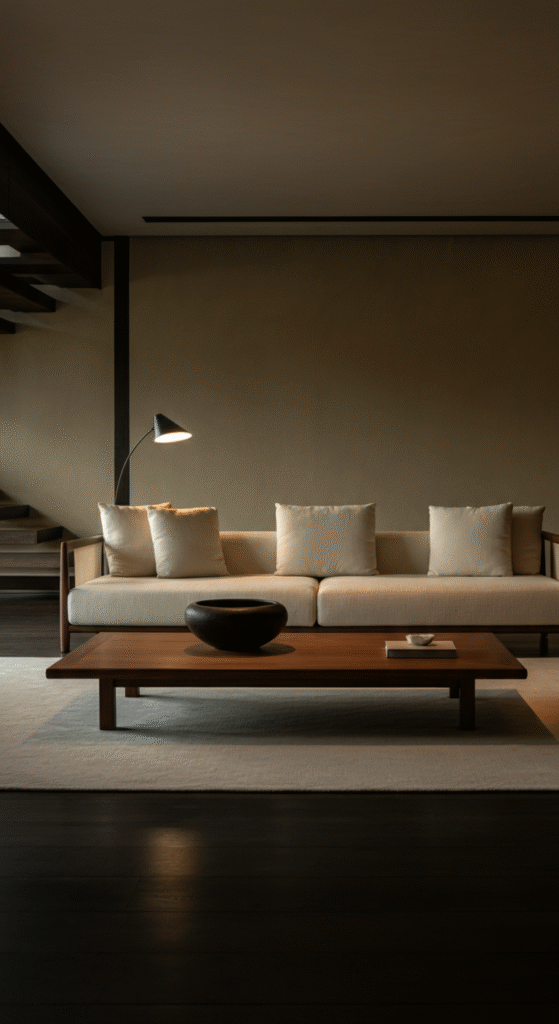
In Japandi design, less is more. One of the most defining features of this style is the use of low furniture pieces. This not only adds to the minimalist aesthetic but also creates an open, airy feeling in your living room.
Do you know that Japanese furniture is known for its low-sitting design due to the cultural preference for sitting on the floor? This tradition influences modern Japandi furniture, making it both functional and beautiful.
For a Japandi-inspired living room, look for low-profile sofas and armchairs. Pair them with minimalist wooden tables, like a low coffee table or a floating media unit, to maintain the sleek, clean aesthetic.
4. Minimalist Lighting to Create a Cozy Ambience

Lighting plays a critical role in Japandi interiors. Instead of harsh, bright lights, Japandi style embraces soft, ambient lighting that creates a cozy, peaceful environment. The goal is to replicate the soft, natural light that filters through paper lanterns and wooden windows in traditional Japanese homes.
An interesting fact: The Japanese believe that lighting should mimic the light of nature. That’s why natural light and soft, warm-toned lamps are a must in Japandi rooms.
Consider pendant lights made from bamboo or rice paper to bring a touch of Japan into your space. Or, opt for simple Scandinavian-designed floor or table lamps that provide soft, diffused light to illuminate the room.
5. Functional and Beautiful Storage Solutions
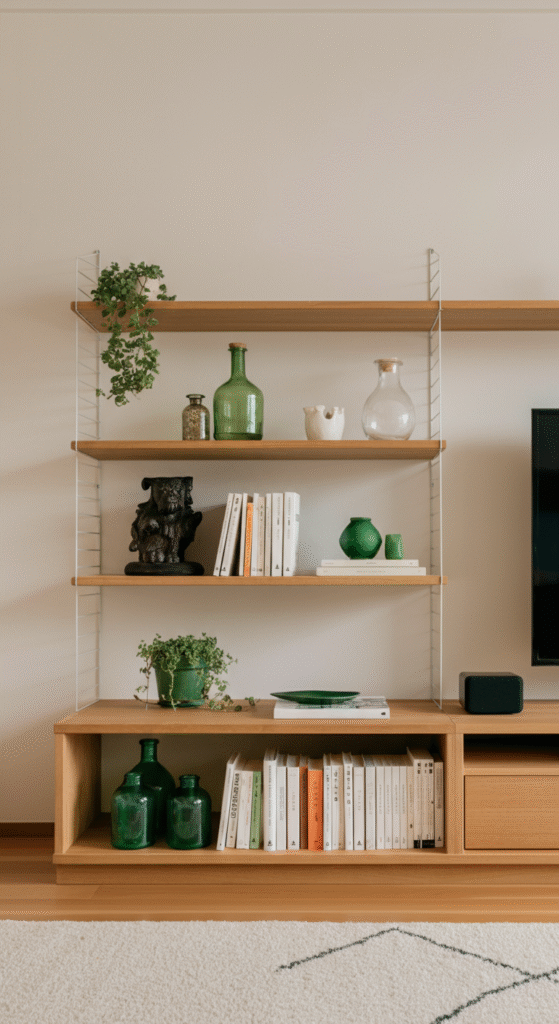
Japandi design is all about functionality and simplicity. One of the best ways to incorporate this style into your living room is by choosing storage solutions that blend seamlessly with the overall design. Japandi storage should be sleek, unobtrusive, and highly practical.
Do you know that in Japanese homes, everything has its designated space? This creates a sense of order and tranquility in the home, which is essential for creating a peaceful living room environment.
For a Japandi living room, opt for storage solutions like low, streamlined shelves or minimalist cabinets that keep your space organized without compromising the style. You can also use multi-functional furniture, such as storage ottomans or coffee tables with hidden compartments.
6. Incorporating Natural Plants for a Touch of Green
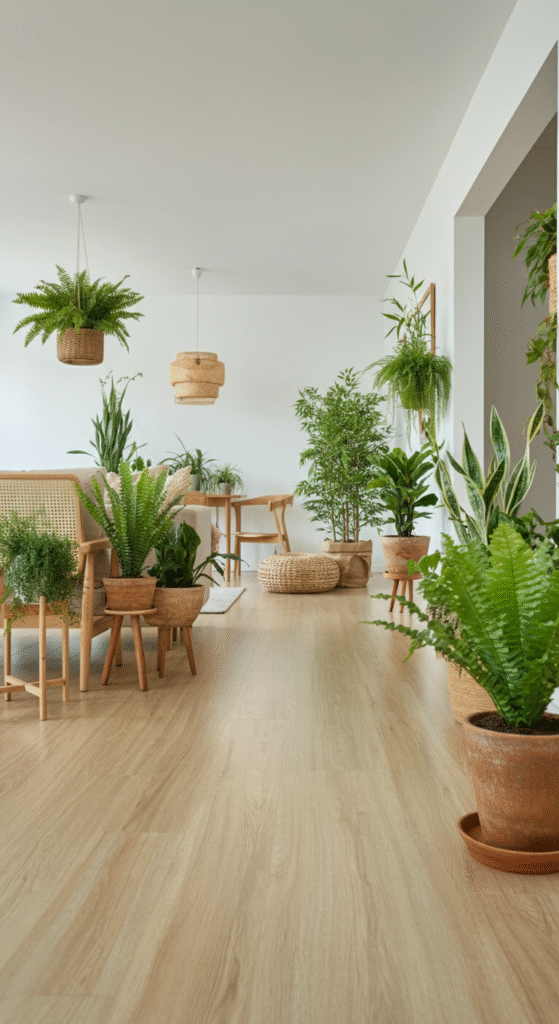
Adding natural plants to your Japandi living room is a must. Plants not only bring color and life to your space but also enhance the natural, calming vibe. Choose plants that thrive in low light, such as ferns, bamboo, or snake plants, to complement the Japandi aesthetic.
Interesting myth: In Japanese culture, plants symbolize growth and longevity. This makes them a perfect addition to any home, promoting both physical and spiritual wellness.
For the perfect Japandi plant setup, place a large plant in the corner of the room or hang smaller plants from the ceiling in simple woven baskets. Make sure the pots are made from natural materials like clay, ceramic, or bamboo to stay true to the Japandi look.
7. Embrace Minimal Decor and Thoughtful Art
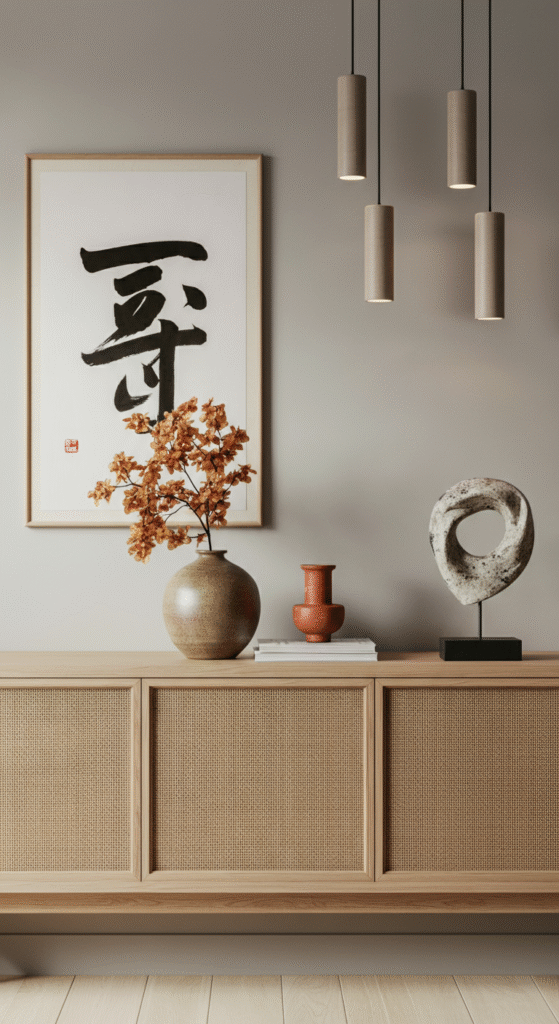
In Japandi design, decor is minimal and thoughtful. This doesn’t mean your living room should be devoid of personality. Instead, opt for a few select pieces that speak to your aesthetic, like a handwoven rug, a statement vase, or a piece of Japanese calligraphy or Scandinavian art.
Myth: Many people believe that Japandi style is cold and uninviting, but the truth is that its simplicity and thoughtful decor actually create a warm and welcoming space.
For your Japandi-inspired living room, choose decor that evokes tranquility — a handcrafted vase, a simple ceramic tea set, or a monochrome painting. Keep the focus on quality over quantity, and be intentional with every piece you add.
8. Layering Textures to Add Warmth and Comfort
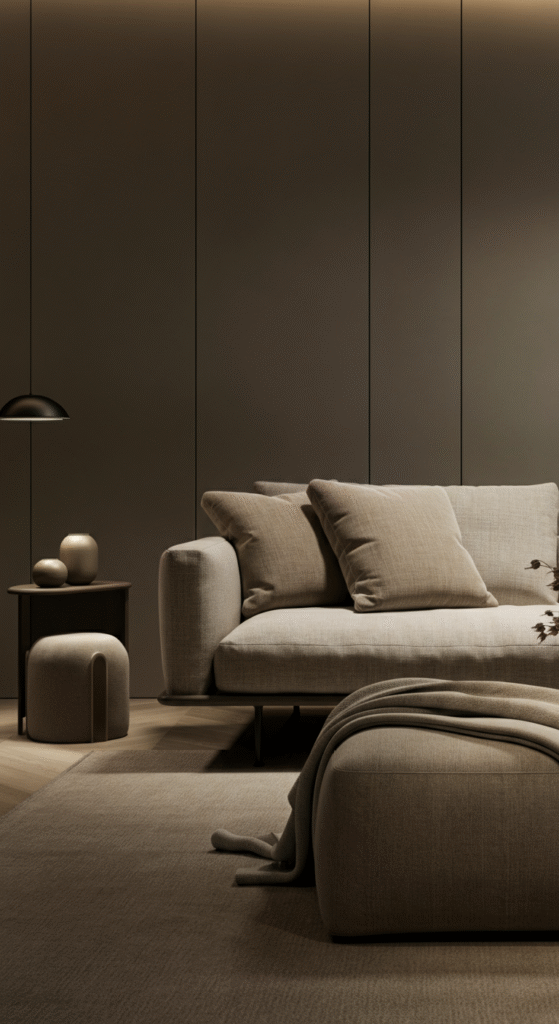
While Japandi style is known for its minimalist approach, layering textures is key to making the space feel inviting and comfortable. Soft textiles, like wool throws, linen cushions, and cotton rugs, are perfect for achieving this balance.
Did you know that layering textures is a common technique used in both Japanese and Scandinavian interiors to create warmth and depth? The use of natural materials, like wool and linen, also helps maintain the organic, earthy feel of the Japandi style.
Incorporate textures by adding a plush throw on your sofa or a wool rug on the floor. Combine different materials like linen, cotton, and wool to make your living room feel cozy and grounded, without cluttering the space.
Conclusion:
Achieving the perfect Japandi living room is all about embracing simplicity, natural elements, and functional design. By combining the best of Japanese and Scandinavian styles, you can create a living room that feels serene, inviting, and balanced.
From natural wood accents to minimalist furniture and soft lighting, each element comes together to create a space that feels like a retreat.
So, whether you’re just starting your Japandi design journey or looking to refine your existing space, these 8 ideas will help you transform your living room into a harmonious haven. Don’t forget to infuse your personal touch and embrace the quiet elegance of this beautiful design philosophy!
Frequently Asked Questions (FAQs)
What is Japandi style?
Japandi style is a blend of Japanese and Scandinavian design principles. It combines the minimalist, functional elements of Scandinavian interiors with the warmth, natural materials, and understated elegance of Japanese design. The result is a calming and balanced living space that promotes simplicity, tranquility, and functionality.
How can I incorporate Japandi style into my living room?
To create a Japandi-style living room, focus on natural materials, a neutral color palette, and minimalistic furniture. Incorporate elements like wooden furniture, neutral-colored walls, soft textiles, and low-profile furniture. Add plants and thoughtful decor to enhance the serene atmosphere, and ensure the space is organized and clutter-free.
What color scheme works best for a Japandi living room?
Japandi design favors neutral, muted tones. Think soft whites, greys, beiges, and earthy hues like terracotta, green, or brown. These colors promote a calming atmosphere and help blend natural materials with the minimalist aesthetic. Use these tones for walls, furniture, and accents to create a peaceful, inviting environment.
Is Japandi style good for small living rooms?
Yes, Japandi style is ideal for small living rooms. The minimalist approach, low-profile furniture, and focus on functional design help maximize space and create an airy, open feel. The neutral color palette and use of natural light also make small spaces appear larger and more inviting.
Can I mix Japandi style with other design styles?
Japandi style can be easily mixed with other design elements, such as modern, bohemian, or industrial. The key is to maintain a balance between simplicity and functionality. For example, combining Japandi with a touch of industrial elements (like exposed steel or concrete) can create an interesting contrast while maintaining the calm, serene vibe.







